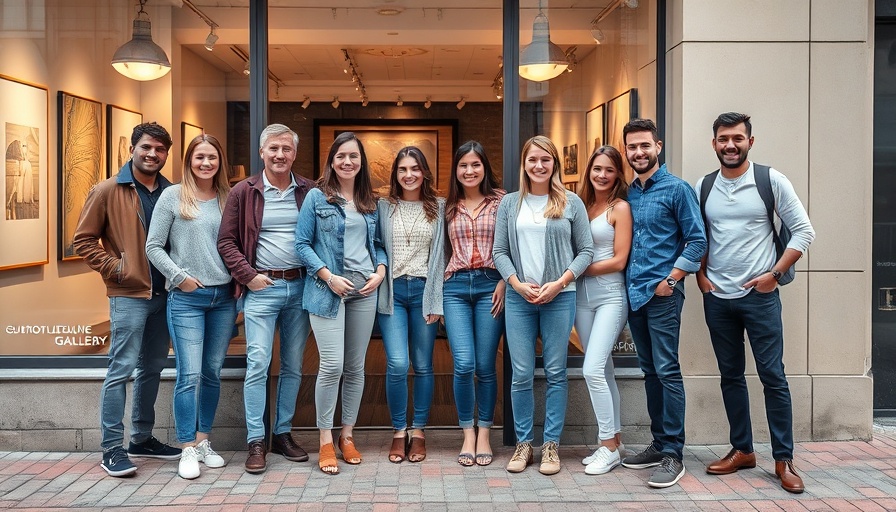
The Intersection of Art and Philanthropy
In a world where for-profit and non-profit pathways often diverge, Art Gallery for Better Lives shines as a vibrant example of how these two can beautifully intertwine. Established by Christopher Wade, this gallery isn’t just a space for art appreciation; it's a beacon of hope, channeling resources towards uplifting vulnerable communities. Starting as a philanthropic initiative in 2009, Wade envisioned a sustainable model that would support local artists while also contributing to educational and social programs in disadvantaged regions of East Africa and Southeast Asia.
An Artist's Dream Unfolded
Wade's journey to opening the gallery was fueled by his passion for art as well as his commitment to social change. "I wanted a way of raising funds for the philanthropy and also to assist local artists," he explains. Artists participating in his gallery contribute by donating ten percent of their sales to the Better Lives organization. This approach not only supports local creators but ensures that the sales contribute to meaningful change, enabling children and families to find pathways to sustainable living.
Building Bridges Through Community
The space itself is designed to foster connections—not just among artists and art lovers, but also across communities. Visitors to the gallery can feel the vibrancy of creativity, and they often leave inspired, having witnessed the tangible impact of their support. Wade believes that by merging art and altruism, they can build a community that celebrates creativity while addressing critical social needs. This dual mission resonates deeply with many, showcasing how art can be a vehicle for change.
Weaving Happiness into the Fabric of Society
The gallery becomes a sanctuary where art lovers and supporters can feel they are part of something larger than themselves. "Better lives.org is all about creating happiness for children and families," Wade muses, capturing the essence of his commitment. It's not merely about showcasing beautiful pieces; it’s about fostering joy and development through art. Wade's ownership of the gallery—purchasing the building years prior—hints at a long-term vision, as he spent years nurturing the idea before the physical space opened its doors.
Challenging Conventional Business Models
The unique blend of charitable and for-profit elements in this initiative raises interesting questions about traditional business models within the art world. The non-profit model has been explored in various contexts, such as collaborative initiatives where artists and galleries partner with charities for mutual benefit. Some galleries traditionally retain a 30-60% commission on sales, yet Wade’s approach flips that model, allowing for greater direct support to charitable causes without the heavy administrative overhead that often burdens non-profit organizations.
Future Trends in Philanthropic Art Sales
The ripple effects of Wade's gallery are indicative of a growing trend where artists leverage their work for social change. Many are now modifying their sales tactics, offering limited-edition works or auctioning pieces with pledges for proceeds to support charitable initiatives. This shift not only fosters a culture of giving but cultivates awareness around the importance of sustaining communities through art.
Call to Action: Support Local Art and Charitable Efforts
As the gallery continues to thrive, it invites community members to explore its offerings and get involved. By visiting the gallery, purchasing artworks, or simply spreading the word, you become a part of this inspiring narrative of creativity and compassion. In a world that often feels divided, art remains a unifying force, reminding us of the beauty that can emerge from collaboration and collective effort.
 Add Row
Add Row  Add
Add 




Write A Comment